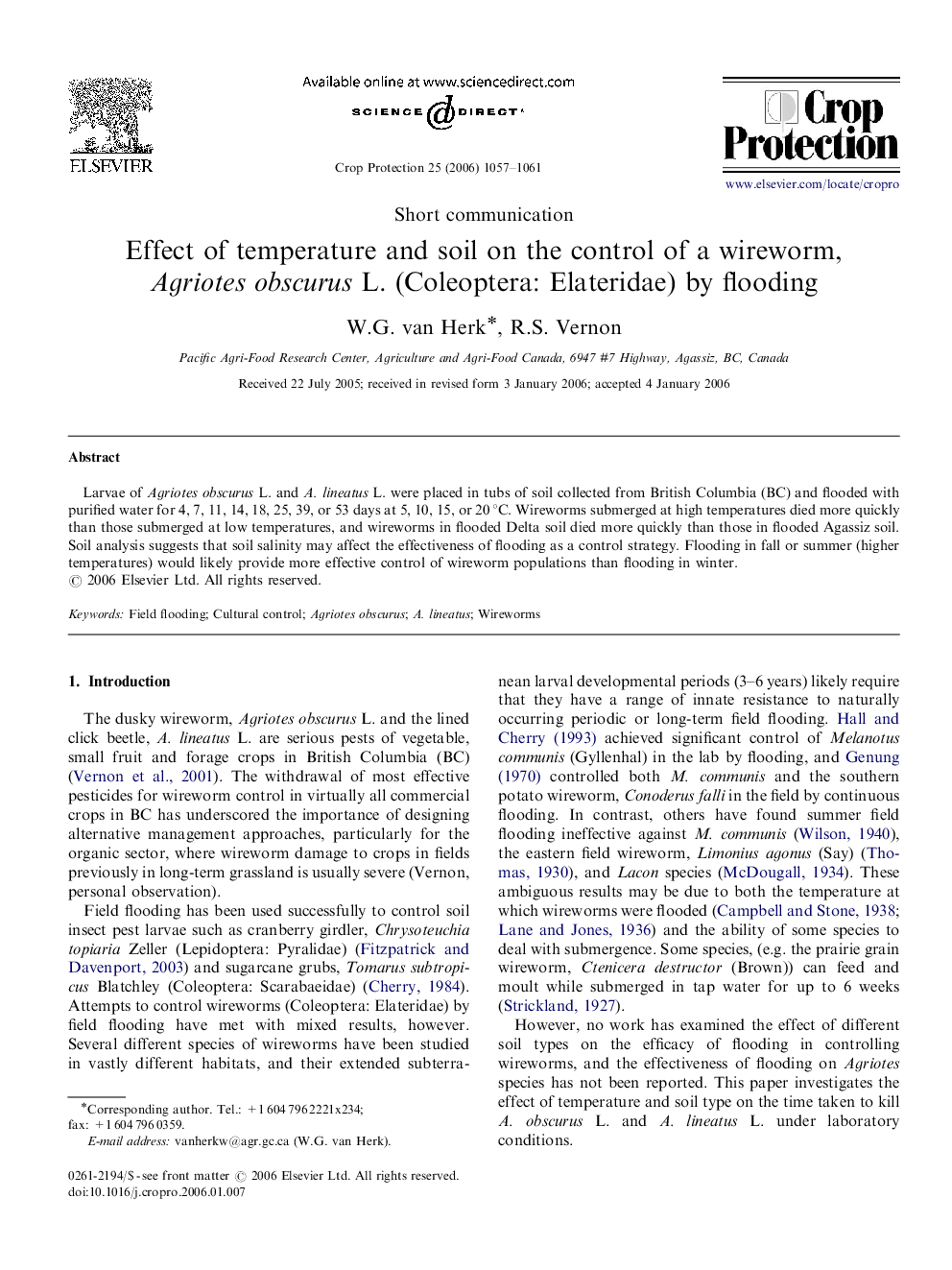| Article ID | Journal | Published Year | Pages | File Type |
|---|---|---|---|---|
| 4508089 | Crop Protection | 2006 | 5 Pages |
Abstract
Larvae of Agriotes obscurus L. and A. lineatus L. were placed in tubs of soil collected from British Columbia (BC) and flooded with purified water for 4, 7, 11, 14, 18, 25, 39, or 53 days at 5, 10, 15, or 20 °C. Wireworms submerged at high temperatures died more quickly than those submerged at low temperatures, and wireworms in flooded Delta soil died more quickly than those in flooded Agassiz soil. Soil analysis suggests that soil salinity may affect the effectiveness of flooding as a control strategy. Flooding in fall or summer (higher temperatures) would likely provide more effective control of wireworm populations than flooding in winter.
Keywords
Related Topics
Life Sciences
Agricultural and Biological Sciences
Agronomy and Crop Science
Authors
W.G. van Herk, R.S. Vernon,
